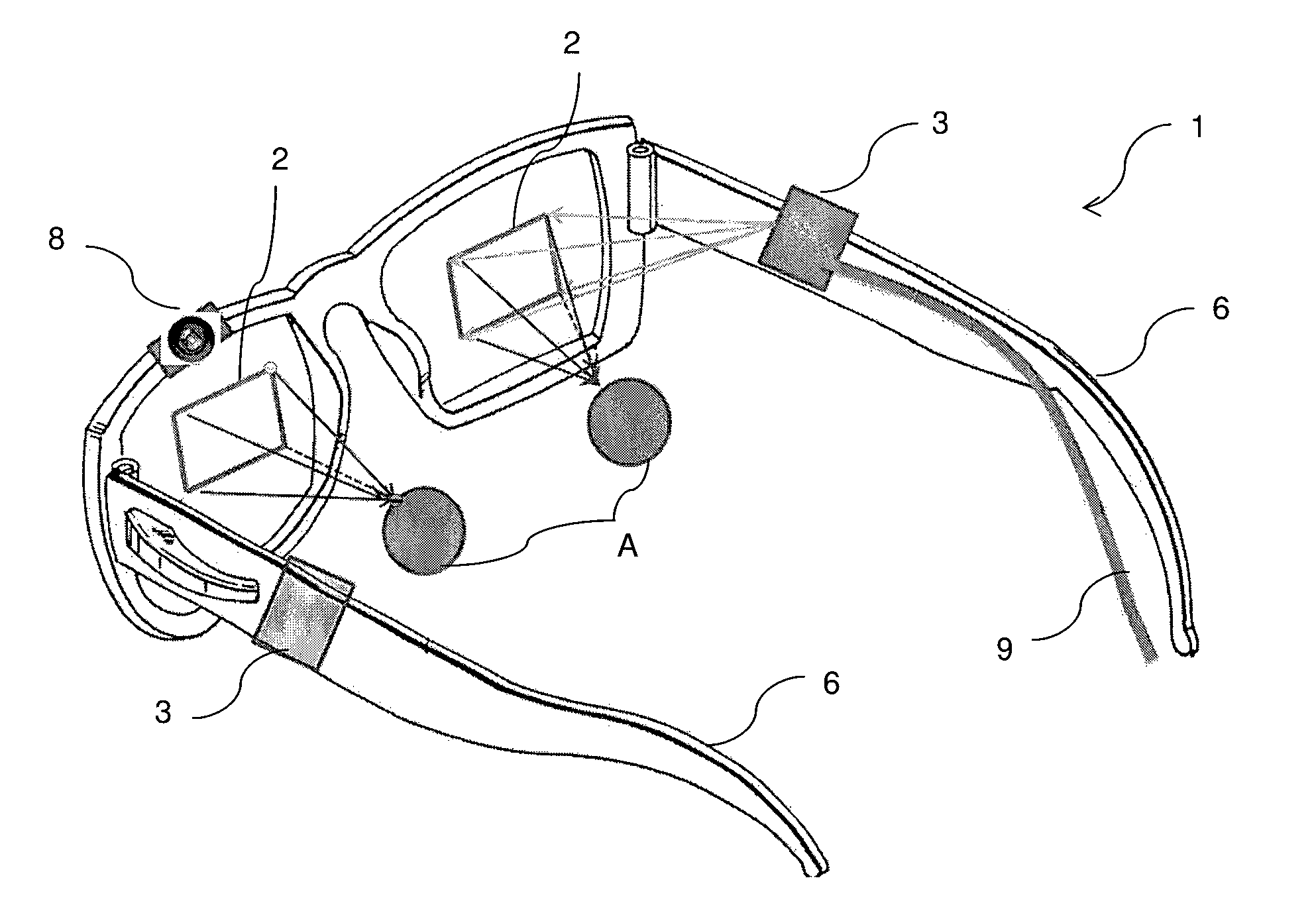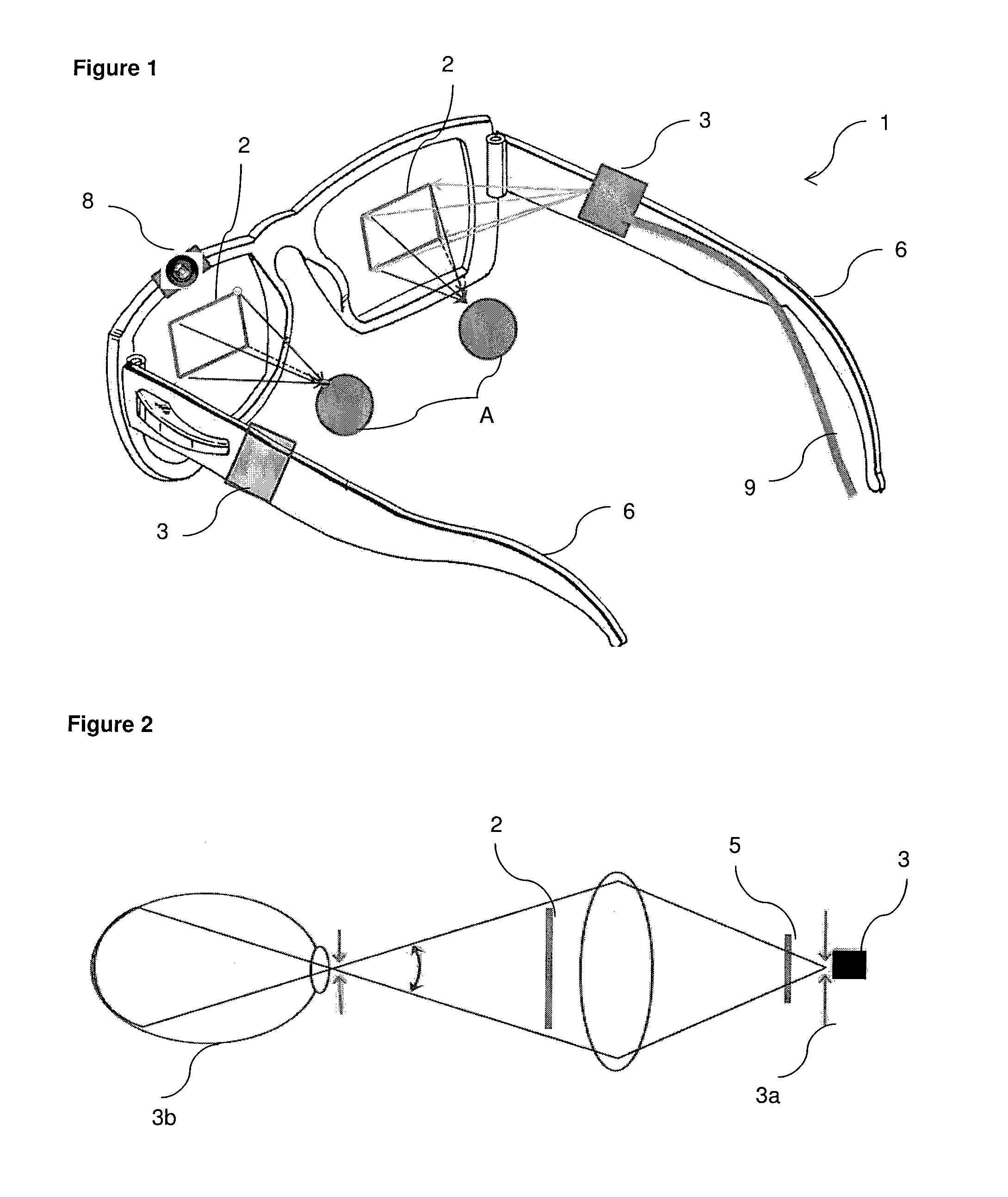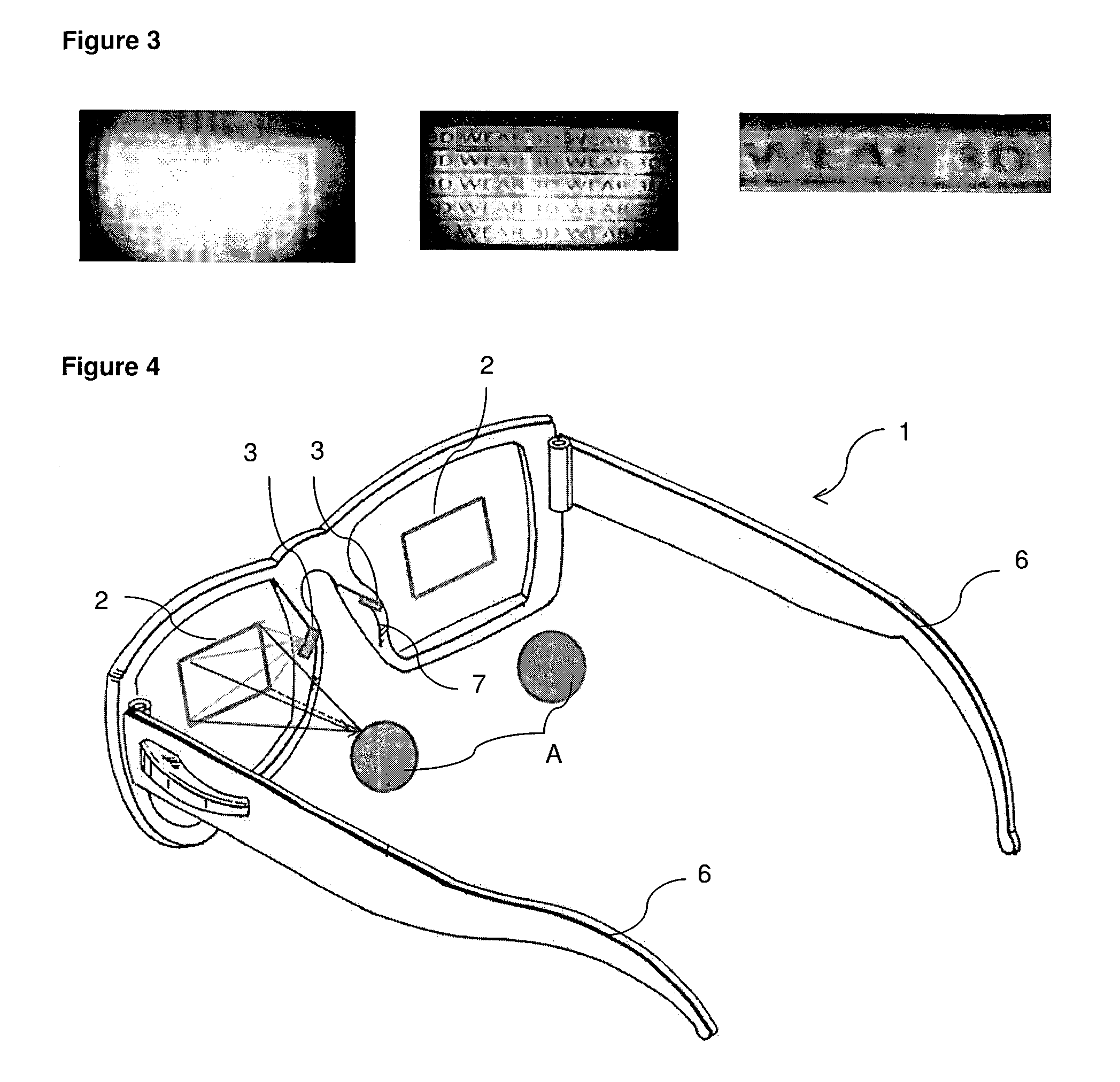Image display device in the form of a pair of eye glasses comprising micro reflectors
a technology of image display device and eyeglass, which is applied in the direction of mirrors, optics, instruments, etc., can solve the problems of limited resolution, large optical volume, and complicated optical mechanisms offered to track the pupil, so as to reduce the size of wearable displays, avoid perceptual errors and viewing discomfort, and eliminate relay optics
- Summary
- Abstract
- Description
- Claims
- Application Information
AI Technical Summary
Benefits of technology
Problems solved by technology
Method used
Image
Examples
Embodiment Construction
[0032]The image display device (1) of the present invention comprises at least one spatial light modulator (2), at least one point light source (3), wherein the point light source (3) and the viewer's eyes (A) are placed on the front side of the spatial light modulator (SLM) (2) such that the point light source (3) directly illuminate the front surface of the spatial light modulator (2) and characterized by a matrix of micro reflectors (4) that are attached on the back surface of the spatial light modulator (2).
[0033]Referring to FIG. 1, the basis of this invention is the pinhole camera imaging principle. The pinhole based imaging principle disclosed in this invention can produce a wide field-of-view imaging directly onto the retina without using external relay lenses between the SLM (2) and the eye (A). In this invention, diverging illumination created by the point light source (3) is converted to a converging illumination by matrix of micro reflectors (4) (FIG. 1).
[0034]While our ...
PUM
| Property | Measurement | Unit |
|---|---|---|
| exit-pupil-size | aaaaa | aaaaa |
| distance | aaaaa | aaaaa |
| semi-transparent | aaaaa | aaaaa |
Abstract
Description
Claims
Application Information
 Login to View More
Login to View More - R&D
- Intellectual Property
- Life Sciences
- Materials
- Tech Scout
- Unparalleled Data Quality
- Higher Quality Content
- 60% Fewer Hallucinations
Browse by: Latest US Patents, China's latest patents, Technical Efficacy Thesaurus, Application Domain, Technology Topic, Popular Technical Reports.
© 2025 PatSnap. All rights reserved.Legal|Privacy policy|Modern Slavery Act Transparency Statement|Sitemap|About US| Contact US: help@patsnap.com



